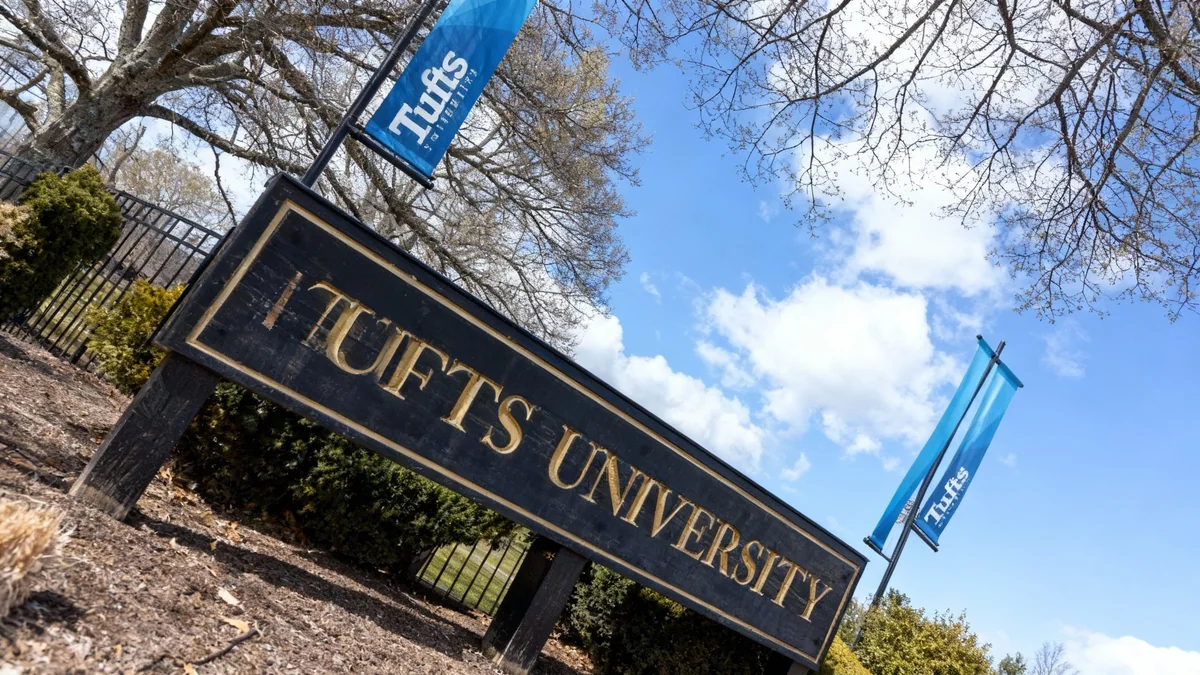Graduate students in nursing, social work, and other critical fields could soon face significantly lower federal student loan limits. A reinterpretation of a 1965 law by the Department of Education is set to reclassify which programs qualify as "professional degrees," a change that carries major financial implications for students and the future of essential workforces.
The new guidelines, scheduled to take effect in July 2026, could create substantial financial barriers for individuals pursuing advanced degrees in professions currently experiencing critical shortages. Professional organizations have warned that these changes threaten to undermine efforts to grow and sustain the nation's healthcare and social support systems.
Key Takeaways
- A federal rule change is narrowing the definition of a "professional degree," excluding fields like nursing, social work, and public health.
- Students in these non-professional graduate programs will face a lower federal loan cap of $20,500 per year, down from the $50,000 available to designated professional programs.
- The total borrowing limit for these students will be capped at $100,000, compared to $200,000 for fields like medicine and law.
- Advocacy groups warn this could worsen the national nursing shortage and impact access to care in underserved areas.
The Definition at the Center of the Debate
The controversy originates from the interpretation of a federal law enacted in 1965. This law defines a "professional degree" as one that marks the completion of academic requirements needed to begin practicing in a specific profession, requiring skills beyond a standard bachelor's degree.
However, the law provided a specific list of examples that has become the foundation for the new policy. This list, which the Department of Education is now using to guide loan regulations, includes only ten fields.
The Official List of Professional Degrees
The original 1965 law listed the following as examples of professional degrees:
- Pharmacy (Pharm.D.)
- Dentistry (D.D.S. or D.M.D.)
- Veterinary Medicine (D.V.M.)
- Chiropractic (D.C. or D.C.M.)
- Law (L.L.B. or J.D.)
- Medicine (M.D.)
- Optometry (O.D.)
- Osteopathic Medicine (D.O.)
- Podiatry (D.P.M., D.P., or Pod.D.)
- Theology (M.Div., or M.H.L.)
While the law stated this list was not exhaustive, current policy discussions have adhered to it strictly, leaving out many other modern advanced-practice fields.
This narrow interpretation means that dozens of other graduate programs, including those in nursing, architecture, accounting, occupational therapy, physical therapy, and social work, are not classified as "professional." Consequently, students in these programs are set to be categorized differently for financial aid purposes, leading to a significant disparity in borrowing capacity.
The Financial Impact on Graduate Students
The reclassification carries direct and severe financial consequences for students. The changes are tied to new caps on federal student loans, which will create a two-tiered system for graduate education funding.
Under the new rules, students enrolled in one of the ten designated "professional degree" programs can borrow up to $50,000 per year from the federal government, with a total aggregate limit of $200,000. This higher limit acknowledges the intensive and often expensive nature of medical, legal, and veterinary training.
A Tale of Two Loan Caps
- "Professional Degree" Students: Up to $50,000 per year, $200,000 total.
- Other Graduate Students: Capped at $20,500 per year, $100,000 total.
In contrast, students in graduate programs that are not on the list—such as a Doctor of Nursing Practice (DNP) or a Master of Social Work (MSW)—will face a much lower cap. They will be limited to borrowing just $20,500 per year, with an overall limit of $100,000. This amount is often insufficient to cover tuition, fees, and living expenses for many advanced degree programs, forcing students to seek out private loans with less favorable terms or abandon their educational goals altogether.
These changes are part of a broader overhaul of higher education financing, which also includes the elimination of the Grad PLUS loan program. This program has historically been a crucial resource for students pursuing training-intensive careers, filling the gap between standard federal loans and the actual cost of attendance.
Warnings from Healthcare and Education Leaders
Professional organizations have been vocal in their opposition to the narrowed definition, warning of its potential to cripple essential sectors of the economy. The American Nurses Association (ANA) has been particularly outspoken, highlighting the threat the policy poses to national healthcare readiness.
"At a time when healthcare in our country faces a historic nurse shortage and rising demands, limiting nurses’ access to funding for graduate education threatens the very foundation of patient care," stated Jennifer Mensik Kennedy, president of the ANA, in a letter addressing the issue.
Kennedy emphasized the critical role of advanced practice registered nurses (APRNs), especially in areas with limited access to physicians. "In many communities across the country, particularly in rural and underserved areas, advanced practice registered nurses ensure access to essential, high-quality care that would otherwise be unavailable," she added.
The American Council on Education (ACE), which represents a wide range of higher education institutions, has also advocated for expanding the definition. In a letter to the Office of Postsecondary Education, the ACE argued for the inclusion of numerous other fields that require advanced, specialized training and licensure to practice. They believe the current interpretation is outdated and fails to reflect the modern landscape of professional education.
Long-Term Consequences for the Workforce
The impending loan cap changes, set to take effect on July 1, 2026, could have far-reaching consequences beyond individual student debt. Experts worry that creating financial barriers to entry for fields like nursing and social work will exacerbate existing labor shortages.
The healthcare system is already under immense strain from a lack of qualified nurses. By making graduate-level nursing education less accessible, the new policy could slow the pipeline of highly skilled nurse practitioners, nurse anesthetists, and clinical nurse specialists who are vital for patient care, especially in specialized and primary care settings.
Similarly, fields like social work and physical therapy are essential for community well-being, yet they often do not offer the high starting salaries seen in medicine or law. Reducing access to adequate funding could discourage talented individuals from entering these professions, leading to diminished services for vulnerable populations, including the elderly, children, and individuals with disabilities.
As the 2026 deadline approaches, students, educators, and professional leaders are urging policymakers to reconsider the narrow definition of a "professional degree." They argue that a broader, more inclusive approach is necessary to ensure the nation can train the skilled workforce it needs for a healthy and functional society.





